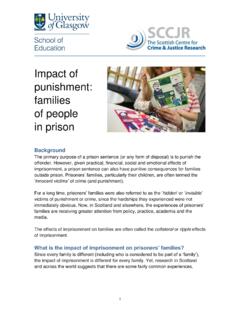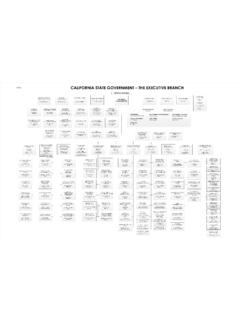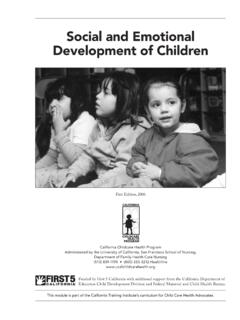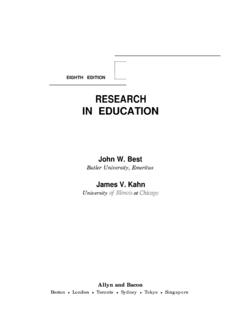Transcription of Theories and causes of crime - SCCJR
1 1 Theories and causes of crime Introduction There is no one cause of crime . crime is a highly complex phenomenon that changes across cultures and across time. Activities that are legal in one country ( alcohol consumption in the UK) are sometimes illegal in others ( strict Muslim countries). As cultures change over time, behaviours that once were not criminalised may become criminalised (and then decriminalised again alcohol prohibition in the USA). As a result, there is no simple answer to the question what is crime ? and therefore no single answer to what causes crime ? Different types of crime often have their own distinct causes . (For more about definitions of crime see SCCJR What is crime ? You can also find out about specific types of crime at: SCCJR Violence Against Women and Girls; SCCJR Drug crime ; SCCJR Knife crime ) This briefing provides an overview of some of the key criminological Theories that seek to explain the causes of crime ; it is by no means an exhaustive list.
2 Each of the Theories covered has its own strengths and weaknesses, has gaps and may only be applicable to certain types of crime , and not others. There is no right or wrong theory. The Theories covered can be categorised into two main approaches: 1) Biological Theories 2) Sociological Theories 2 Lombroso and Biological Positivism In the 19th Century, Italian prison psychiatrist Cesare Lombroso drew on the ideas of Charles Darwin and suggested that criminals were atavistic: essentially evolutionary throwbacks . He suggested that their brains were mal-developed or not fully developed. In his review of prisoners, he found that they shared a number of common physical attributes, such as sloping foreheads and receding chins. In so doing, Lombroso suggested that involvement in crime was a product of biology and biological characteristics: criminals were born that way. Lombroso s theory is essentially a theory of biological positivism.
3 Positivism: Influenced by the scientific discoveries of the 18th and 19th centuries, positivism is a research tradition that seeks to establish objective causes of individual behaviour. 1) Biological Theories Biological explanations of crime assume that some people are born criminals , who are physiologically distinct from non-criminals. The most famous proponent of this approach is Cesare Lombroso. Lombroso s work has long since fallen out of favour. However, biological Theories have continued to develop. Rather than measuring physical features of the body, contemporary approaches focus on: Biochemical conditions ( linked to poor diet or hormone imbalance) Neurophysiological conditions ( learning disabilities caused by brain damage) Genetic inheritance and/or abnormality Intelligence These attempts, to locate the causes of crime within the individual, suggest that there are identifiable differences between offenders and non-offenders.
4 In other words, the criminal is other : in some way different or abnormal to everyone else. More information on Lombroso s Theories More information on contemporary biological and biosocial approaches 3 2) Sociological Theories Sociological approaches suggest that crime is shaped by factors external to the individual: their experiences within the neighbourhood, the peer group, and the family. Contemporary Theories of crime , place and space include: defensible space theory, which examines how the design of physical space is related to crime ; broken windows theory, which looks the relationship between low level disorder and crime ; and routine activities theory, which considers how opportunities to commit crime are shaped by between people s everyday movements through space and time. More information on the Chicago School/Social Disorganisation Theory More information on contemporary Theories of crime , place and space The Chicago School/Social Disorganisation Theory Social disorganisation theory grew out of research conducted by sociologists at the University of Chicago in the 1920s and 1930s.
5 It key proponents were Clifford R. Shaw and Henry D. McKay (1942), who used spatial mapping to examine the residential locations of juveniles referred to court. Shaw and McKay found that patterns of delinquency were higher in areas characterised by poor housing, poor health, socio-economic disadvantage and transient populations. This led them to suggest that crime was a function of neighbourhood dynamics and not due to individual actors and their actions. Shaw and McKay explained these patterns by reference to the problems that accompanied immigration to Chicago at this time. They claimed that areas settled by newly arrived immigrants experienced a breakdown of social norms due to ethnic diversity and competing cultural traditions. Conventional institutions of social control were therefore weakened and unable to regulate the behaviour of local youths. 4 Anomie/Strain Theory Anomie is a concept developed by one of the founding fathers of sociology, Emile Durkheim, to explain the breakdown of social norms that often accompanies rapid social change.
6 American sociologist Robert Merton (1957) drew on this idea to explain criminality and deviance in the USA. His theory argues that crime occurs when there is a gap between the cultural goals of a society ( material wealth, status) and the structural means to achieve these ( education, employment). This strain between means and goals results in frustration and resentment, and encourages some people to use illegitimate or illegal means to secure success. In short, strain theory posits that the cultural values and social structures of society put pressure on individual citizens to commit crime . Jock Young draws on Merton s anomie/strain theory in his recent book, The Exclusive Society (1999), locating crime in relation to both structural and cultural processes. Structurally speaking, Young argues that the dismantling of the welfare state, alongside increasing disparities between the rich and the poor, have served to further exclude disadvantaged groups.
7 This has occurred alongside high levels of cultural inclusion. Contemporary consumer capitalism places greater emphasis on conspicuous consumption and material success, intensifying feelings of deprivation experienced by the less successful. (See section on Relative deprivation , below). More information on strain Theories More information on the work of Jock Young 5 Subcultural Theory Linked to anomie and strain are concepts of status frustration and differential opportunity, which North American subcultural theorists used to explain the delinquent activities of disadvantaged groups in the 1950s and 60s. Status frustration is associated with the work of Albert Cohen (1955), who conducted research into group offending by young, lower-class men. Cohen argued that lower-class youths could not aspire to middle-class cultural goals and so, frustrated, they rejected them to create their own subcultural system of values. In school, for example, they gain status and respect by meeting the expectations of peers not teachers, engaging in delinquent activities such as smoking, truanting, and acting up in class.
8 Richard Cloward and Lloyd Ohlin (1960) built on these ideas, pointing to the differential opportunity structures available to lower-class young people in different neighbourhoods: criminal (making a living from crime ), conflict (territorial violence and gang fighting) and retreatist (drugs and alcohol). Researchers at the Scottish Centre for crime and Justice Research draw on some of these ideas in their research on young people and gangs . See, for example, susan Batchelor s research on girls and violence, which emphasises the gendered meaning of respect in street-orientated youth groups, or Alistair Fraser s work on territorial gang identity amongst young men in Glasgow. More information on North American subcultural theory 6 Social Control Theory Strictly speaking control theory does not address the causes of crime , but rather focuses on why people obey the law. In other words, it explains conformity rather than deviance.
9 It is primarily associated with the work of Travis Hirschi (1969), an America social scientist who proposed that people general conform to social norms due to strong social bonds. Conversely, they engage in delinquent acts when these bonds are broken or weak. The key components of social bonds are: Attachment: How strong or weak is an individual s relationship with others? Do these others expect certain kinds of behaviour (such as obeying the law) from this individual? The stronger the attachment and the stronger the expectations, the more likely it is that the individual will conform. Commitment: The more an individual commits his/herself to a particular lifestyle (for example, being married, being a parent, having a job), the more he/she has to lose if he/she becomes involved in crime (and so deviate from the lifestyle). Involvement: This component comes down to time the more time the individual spends engaging in law abiding behaviour, the less time he/she has to engage in law breaking behaviour.
10 Belief: this relates to upbringing. If an individual has been brought up to be law abiding, they are less likely to become involved in crime . Control theory is one of the most frequently used and tested criminological Theories . More information on Hirschi s theory of social bonds 7 Realism: Realist criminology tends to be written from a particular ideological position, it is politically right or left. Both approaches attempt to get real about the problem of crime : treating it as a serious social issue. Right Realism/Rational Choice Theory This branch of criminology sees individuals as rational actors: individuals are capable of making their own choices, which includes choosing to commit crime . In any course of action, individuals weigh up the likely benefits and disadvantages of each action. Right realism emerged in the USA and the UK around the 1980s, in response to rising crime rates and a perceived failure of sociological approaches to adequately address the real causes of crime .








